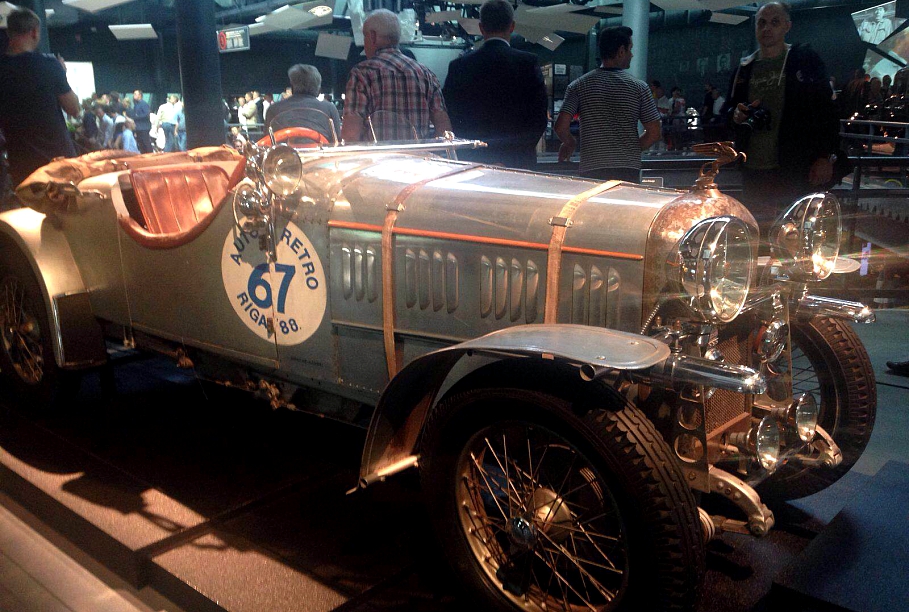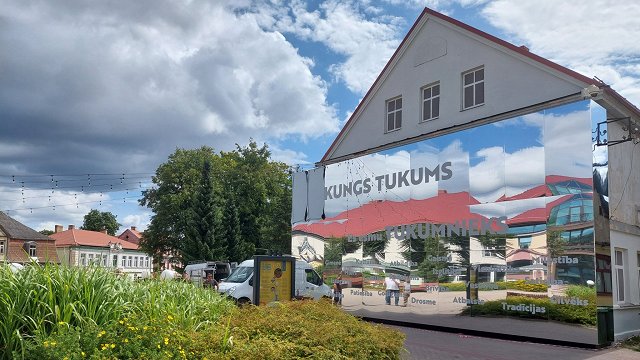Even those not crazy for cars will find their eyes fixed on the motley exhibition featuring old car adverts, racing videos on the walls, colorful tablets about the history of motor vehicles.
You'll need at least a few hours to have a good look at the largest collection of antique cars in the Baltics.
Latvian Radio was guided through the maze of old vehicles and history by Aivars Aksenoks, head of the museum. The first stop on the path of tire tracks guiding visitors concerns the very inception of motor cars.
"This is the first car in the world, and a new acquisition by the museum, bought only this year.
Now everyone can take a look at the first car in the world, made and patented in 1886 by Karl Benz," said Aksenoks, admitting though that despite being fully operational this is merely a copy of the first car in the world.
The tracks lead to the turn of the 20th century when car manufacture reached an industrial scale.
A car made by Augusts Krastiņš, a Latvian who moved to the US, is now on display at the museum.
"He made a car manufacture company and started making cars about at the same time when Henry Ford did, and with roughly the same beginning capital. Sadly the factory was destroyed due to an accident - a fire. However one car has survived from the time, and we're really glad we can show it in the museum exhibition," said the head of the museum.
This car was entrusted to the museum by its owner, like many of the other exhibits.
Touchscreen monitors by each set of vehicles tell visitors about the context in which they were made.
The set of the cars from the 30s shows the cars driven by the French Ambassador and the authoritarian president Kārlis Ulmanis. A few steps ahead there's info about the equipment and development of the cars.
"Often visitors ask us how all of these things came to be - how windshield wipers and turn signals were invented. Here we have a story about car accessories [..]. You can, for example, listen to what the sound signals were at that time," said Aksenoks.
While the second story shows the automotive industry in the soviet era. "Here the first thing that awaits is the so-called Kremlin collection that shows cars that high-standing officials of the Soviet Union drove at different times," said Aksenoks.
"Here's the armored vehicle of Stalin, here's the well-known [GAZ] Chaika that was reserved for lower-standing officials," the head of the museum said.
The second-story exhibition is continued by working-class cars that are on show by a wall of an apartment building typical of the soviet era. "We can even take a peek inside the windows of the apartment building and then we see what's going on in the soviet-era apartments," he said.
The museum also offers a look into the history of racing cars.
"The first and most important in this part is the Auto Union mountain racing car. We can see how such cars were driving and competing at that time," Aksenoks said concerning the 1938-made vehicle.
While the lower story of the Rīga Motor Museum centers on the means of transport made in Latvia - starting from Leitners and Ērenpreiss bicycles to vans made at the Rīga Autobus Factory (often abbreviated RAF).
Visitors can step inside one of the vans and go on a tour of a countryside wedding.
The new exhibit cost about €3m to the Road Traffic and Safety Directorate that manages the museum.
The Rīga Motor Museum is open each day. An adult ticket costs €10 while a child ticket will set you back €5.



























